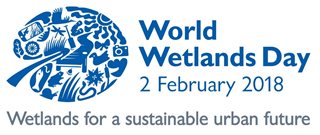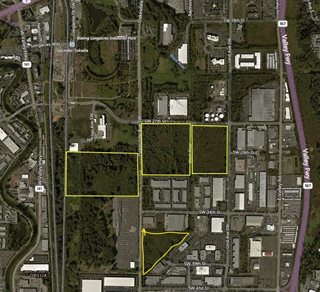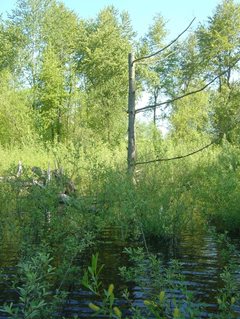Springbrook Trail boardwalk crossing Springbrook Creek in Renton, Wash. The public trail is part of the 130-acre Springbrook Creek Wetland and Habitat Mitigation Bank. The critical urban wetland corridor helps control floods, filters drinking water, provides fish and wildlife habitat, and offers residents a chance to relax outdoors.
4 billion people — live in cities, a number that will continue to increase. In Washington state, the population in the 12 counties contiguous to Puget Sound alone is expected to increase by a million more people during the next 20 years.
World Wetlands Day highlights importance of wetlands
Wetlands help make cities livable because they protect water quality, reduce flooding, help recharge underground sources of water for drinking and other uses, and provide critical habitat for fish and wildlife.
More than a decade ago, the Washington State Department of Transportation and the city of Renton embarked on a project that demonstrates how urban wetland habitats can be protected and restored.
Renton mixes comfortably with its wetlands
Renton is a thriving city in the middle of the busy Puget Sound region. Yet, take just a few steps away from the Renton’s busy arterials, and one becomes immersed in the sounds, sights, and smells of a wetland.
The Springbrook Creek Trail is part of the city's trails plan, providing area residents and their families with a quiet place to break away from Renton's urban center and enjoy the peace and tranquility of an urban wetland environment.
As the forested trail dampens the sounds of cars, trucks and buses, users are greeted by the songs of red-winged blackbirds and the sights of salmon fry swimming in Springbrook Creek and great blue herons fishing in an open wetland.
State, city team together to restore, protect urban wetlands
The Springbrook Creek Wetland and Habitat Mitigation Bank (Springbrook Bank) is part of a larger environmental corridor connecting the Springbrook Valley wetlands to Renton’s 93-acre Black River Riparian Forest. In the future, the trail will become part of the larger regional trail system that will link up with the Interurban, the Green River and the Lake to Sound trails in King County.
And the Springbrook wetland serves a multitude of other uses for Renton residents. In 2006, WSDOT worked in partnership with Renton to develop the 130-acre Springbrook Wetland and Habitat Mitigation Bank. The bank is designed to offset adverse environmental effects that urban development can have on our wetlands and environment.
Map depicts land parcels set aside in Renton to create Springbrook Creek habitat and wetland mitigation bank.
As WSDOT moved forward with plans to widen Interstate 405, a major corridor in the Puget Sound basin, the department also need to make improvements to offset wetland impacts. Because the road project was located in the core of one of the fastest urbanizing areas of the United States, suitable large mitigation sites in the area were limited.
At the same time, Renton was planning for development and looking for solutions to address city growth and flood issues.
WSDOT worked closely with Renton to develop a wetland preserve within the city limits. This was an early project, designed to help meet the I-405 program goal of leaving the environment better than it previously was.
Urban wetlands like Springbrook Bank offer multiple benefits
The preserve provides multiple benefits beyond successfully mitigating the impacts of expanding the freeway and providing flood storage. The bank provides a place for the community to get close to nature, observe plants and animals and learn about them from the interpretive signs posted along the boardwalk. The project:
- Provides a habitat corridor for a range of different birds, fish and other wildlife.
- Re-establishes, enhances and reconnects the wetlands to Springbrook Creek for fish habitat and flood protection.
- The project enhances the City’s resilience to flood events by providing space for flood waters to move and vegetation to disperse flows.
- Expands the city’s trail system that will connect to three other urban trails in the Seattle area.
- Offers the community a place to get close to nature, observe plants and animals, and learn more about the environment from the interpretive signs along the boardwalk.
As a wetland habitat and mitigation bank, the Springbrook Bank site has met and even exceeded its requirements. Within seven years of construction, the bank has successfully established a critical wetland habitat in the middle of Washington’s largest urban area and has served as a mitigation bank for other road projects.
So next time you are in the Renton area, swing on by Oakesdale Avenue and stroll along the Springbrook Creek Trail.





